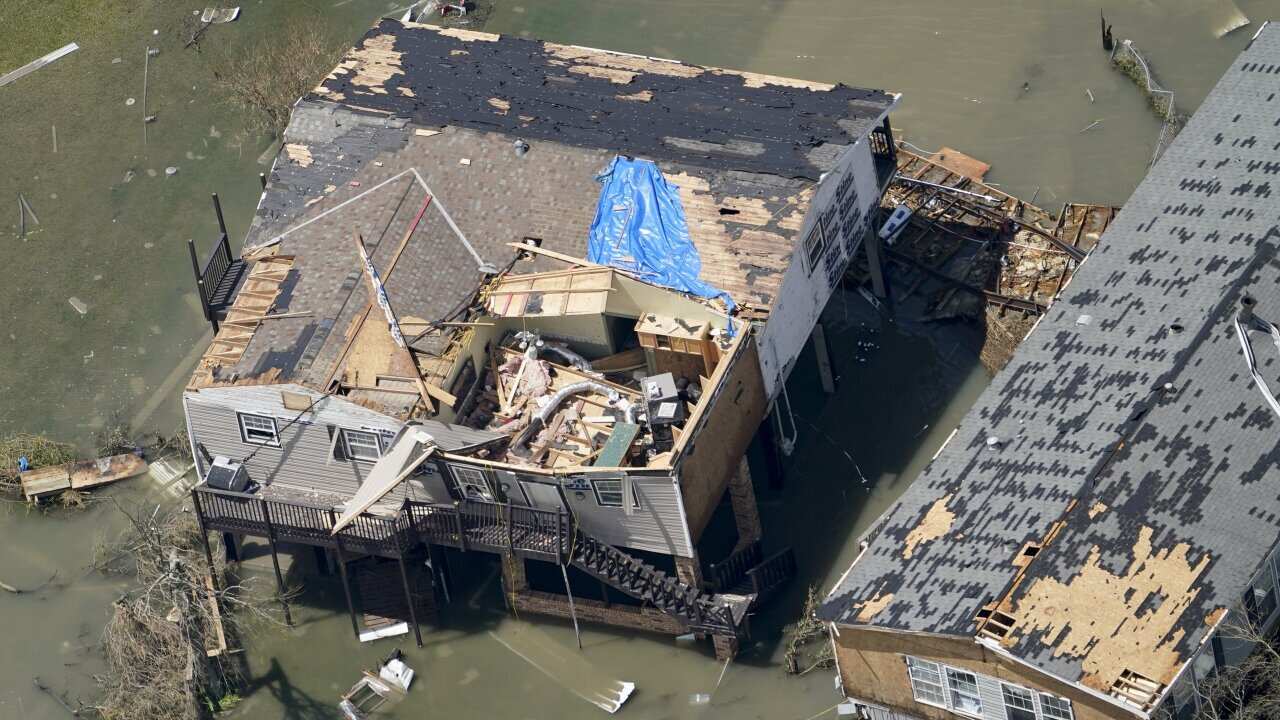Hurricane Sally has barrelled into the US Gulf Coast, with forecasts of drenching rains that could provoke "historic" and potentially deadly flash floods.
The National Hurricane Centre said the Category 2 storm hit Gulf Shores, Alabama early on Wednesday, bringing maximum sustained winds of about 165 kilometres per hour.
The hurricane poses the risk of "catastrophic and life-threatening flooding" along portions of the northern Gulf coast, the Miami-based centre had warned late on Tuesday, adding it could dump up to 500 mm of rain in some areas. About 75,000 homes in Alabama and Florida were already without power on Tuesday evening, according to the Weather Channel, and video posted to social media appeared to show some areas had started to flood.
About 75,000 homes in Alabama and Florida were already without power on Tuesday evening, according to the Weather Channel, and video posted to social media appeared to show some areas had started to flood.

People use flashlights as they walk on flooded streets in search of their vehicle in Pensacola on 16 September 2020. Source: AP
Hurricane Sally had been at a crawling pace of about three kilometres per hour, but was expected to pick up speed through Wednesday.
"We are looking at record flooding, perhaps breaking historic levels. And with rising water comes a greater risk for loss of property and life," Alabama governor Kay Ivey told a press conference.
"I urge you in the strongest way possible to evacuate if conditions permit and seek shelter elsewhere as possible today."
Governor Ivey had declared a state of emergency Monday ahead of Hurricane Sally's arrival.
Record year
Speaking on Fox News, President Donald Trump compared Sally to Hurricane Laura, which battered Texas and Louisiana, as well as the Caribbean, just a few weeks ago.
"This one is smaller but it's a little bit more direct, but we have it under control," he said.
"We have it under watch very strongly."
Earlier, he tweeted: "We are fully engaged with State & Local Leaders to assist the great people of Alabama, Louisiana, and Mississippi."
Mr Trump urged people in the storm's path to "listen to State and Local Leaders".
Mississippi Governor Tate Reeves had also declared a state of emergency ahead of the approaching storm.
He said the storm surge projections were "worrisome with anywhere from five to eight feet of coastal surge".
Governor John Bel Edwards of Louisiana, which is still recovering after Hurricane Laura made landfall in the state as a Category 4 storm, told residents Monday to be prepared.
"Be smart and be safe," he tweeted.
At a hurricane refuge in Pascagoula, a coastal town in eastern Mississippi, 50-year-old evacuee Cliton Shepherd was hoping the area could avoid the worst.
"I don't think the wind is going to hurt anything, hopefully. I pray that it doesn't,” he said.
“But that's the main thing, you know, hoping and praying for the best, that's all we can do."
There have been so many tropical storms in the Atlantic this year that the UN's World Meteorological Organisation, which names the tempests, is about to run out of names for only the second time in history.
The last time was in 2005, the year Hurricane Katrina devastated New Orleans.
The latest Atlantic storm, Hurricane Paulette, pounded the island of Bermuda on Monday with Category 2 winds and heavy rains, according to the NHC.
The centre also said Tropical Storm Teddy, currently positioned in the mid-Atlantic, was expected to become a hurricane.


